The Economics and Statistics Division maintains archives of previous publications for accountability purposes, but makes no updates to keep these documents current with the latest data revisions from Statistics Canada. As a result, information in older documents may not be accurate. Please exercise caution when referring to older documents. For the latest information and historical data, please contact the individual listed to the right.
<--- Return to Archive
For additional information relating to this article, please contact:
November 06, 2019POPULATION BY MARITAL STATUS FOR JULY 1, 2019 Statistics Canada has released details on Nova Scotia's population by marital status for July 1, 2019. This data has bveen updated and revised to include population estimates based on 2016 Census counts adjusted for net undercoverage.
The population can be broken down into six categories of marital status: single, married, separated, living common-law, widowed and divorced.
Of the 971,395 residents estimated for Nova Scotia as of July 1, 2019 the largest numbers are either married (379,080) or single (367,288). Note that this includes all ages, so younger residents are all counted as 'single'. There are a further 90,759 persons living in a common-law arrangement. There were 55,095 widowed Nova Scotians, a disproportionate number of whom are women. There are 27,460 Nova Scotians who are separated and 51,713 who are divorced.
The widowed population is rising faster than those in other marital status categories - increasing by 2.5 per cent from July 1, 2018 to July 1, 2019. Although women represent the largest group of widowed persons, the number of men who are widowed is rising more quickly (3.2 per cent).
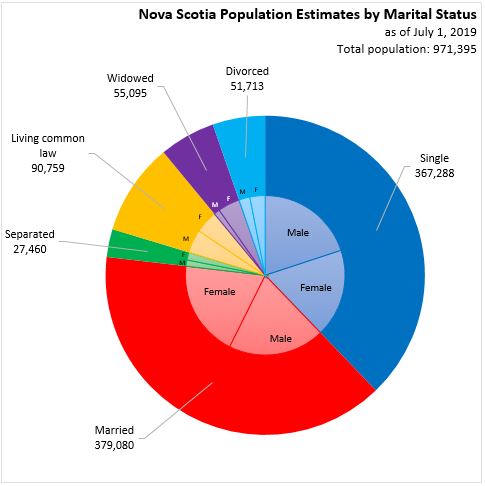
Martial status is variable by age - with younger populations reporting a higher proportion who are single or living in a common law arrangement. Older populations report higher shares who are married, divorced or widowed.
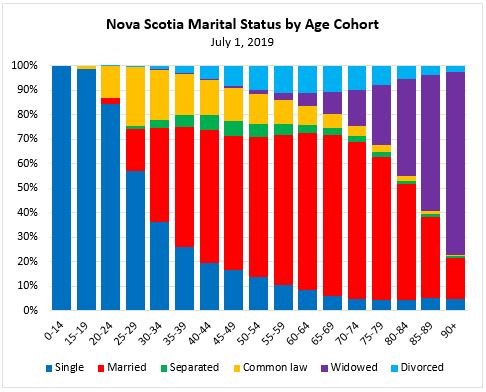
Over time, propensities for married status have changed across age cohorts. From 1991 to 2019, there was a rise in the share of non-senior cohorts who were single, though the share of single individuals among older cohorts (65+) has declined. There has been a rising share of the population living in common law arrangements across all cohorts, but this still makes up a relatively small portion of the population at each age cohort.
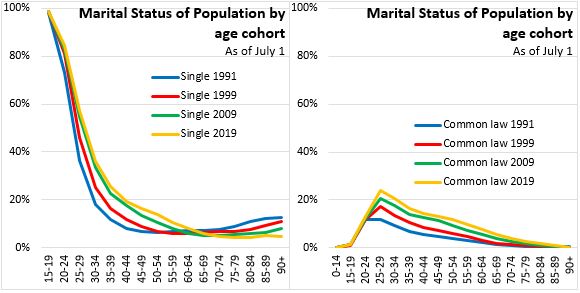
There has also been a decline in the share of non-senior cohorts who are married. For example, in 1991 77 per cent of the population aged 50-54 was married but by 2019, the share of the population aged 50-54 who were married has fallen to 57 per cent. Although the share of the population who are widowed rises consistently with age, the share of the population in age cohorts from 50 to 89 years old who are widowed has been falling.
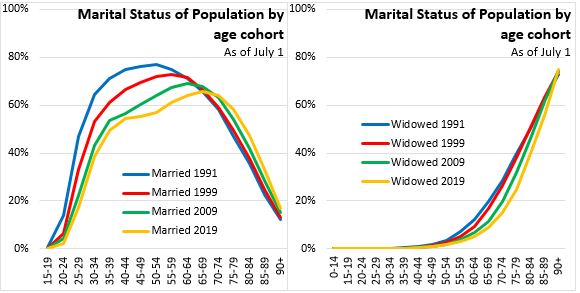
The share of the population who are separated or divorced is comparatively small, but there have been notable changes over time. In 2019, Nova Scotians under age 35 are less likely to be separated than those of similar ages in previous years, but those over age 40 were more likely to be separated than in previous years. Likewise, the share of Nova Scotians in 2019 who were divorced has fallen for younger populations (under age 45), but increased for older populations (aged 45+).
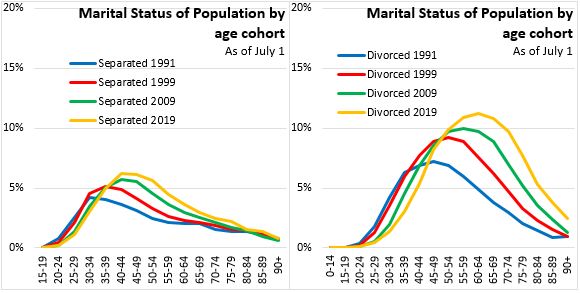
Compared with the national average, a lower portion of Nova Scotia's population is single while higher proportions are married, separated, divorced or widowed. This is consistent with Nova Scotia's older demographic profile.
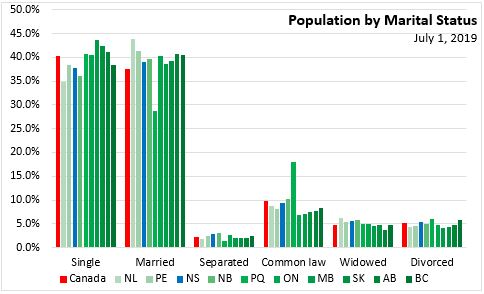
Source: Statistics Canada. Table 17-10-0060-01 Estimates of population as of July 1st, by marital status or legal marital status, age and sex
<--- Return to Archive